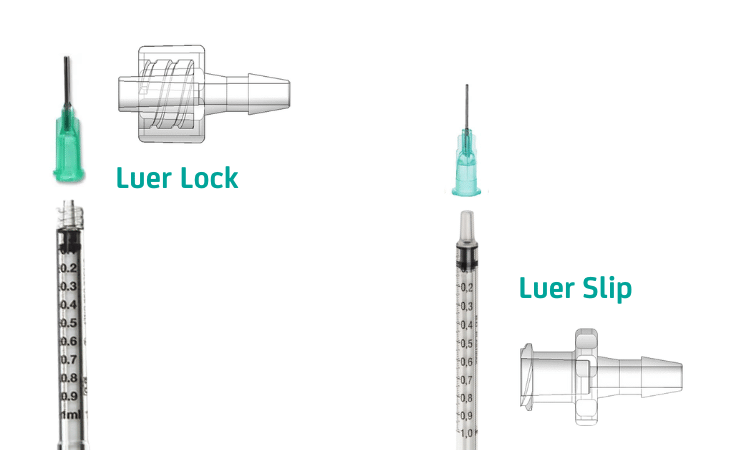What is a Hypodermic Needle?
Hypodermic (hypo – under, dermic – the skin) needles are hollow needles to inject substances into the body or extract fluids from the body, such as extracting blood from a vein. A hypodermic needle offers a fast, safe & easy option for rapid delivery of liquids to the patient when the injected substance cannot be ingested orally, as it would not be absorbed or would harm organs such as the liver.
View Hypodermic NeedlesWhat Are They Used For?
Hypodermic needles are most commonly used for blood administration & transfusions, as well as vaccinations and fast delivery of other fluids (medication) into the patient's body.
Why Use a Hypodermic Needle?
There are several reasons why hypodermic needles are the desired choice for veterinary professionals when it comes to injecting vaccinations or delivering medicine.
- Sterility
- Latex-free
- Easily connected to syringes
- Colour-coded & supplied in a variety of sizes
How Do Hypodermic Needles Work?

Hypodermic needles are hollow and are commonly used with a syringe. They can be easily connected to syringes via both luer lock and luer slip adapters.
A luer lock connector (on the left) has a screw-like design on the outside of the male end of the connector. This screw-like feature is used to attach the male and female parts of the connector by twisting the two parts together. This creates a tight and secure connection that prevents the needle or syringe from accidentally disconnecting during use.
On the other hand, a luer slip connector (on the right) does not have a screw-like feature. Instead, it relies on a friction fit to attach the male and female parts of the connector together. The male end of the connector simply slides into the female end, and the two parts are held together by friction.
Once connected, the way they work is simple. Fluids (either medicine or blood) are drawn up through the needle into the syringe, by pulling back the connected syringe plunger. Keeping the needle tip in the fluid source while the plunger is being pulled, ensures no air enters the syringe.
To dispense fluid from the syringe, through the needle tip, the same is repeated in reverse. Once the fluid has been drawn into the syringe, the needle can be inserted into the patient, and the fluids dispensed. If you are taking blood from the patient, then this will be dispensed where desired (depending on the use case).
How To Use a Hypodermic Needle
- Connect the hypodermic needle tip to a suitable syringe (via a luer lock or luer slip adapter)
- Ensure the plunger is pushed forward. This ensures the correct substance is drawn and no air enters the syringe
- Insert the needle & syringe into the fluid substance (medication) or directly into the patient if taking blood
- Slowly & carefully pull back the syringe plunger, to extract blood or fill the syringe with fluid
- To dispense fluid, place the needle into the patient at a 45-90 degree angle (in the correct area/zone), slowly & carefully pushing the plunger forward.
- Dispose of the syringe & needle appropriately (in the correct sharps waste containers, based on what medication & substances the needle and syringe have come in contact with)

The Different Types of Hypodermic Needles
Hypodermic needles come in a variety of sizes. These are measured in gauge and length. The gauge is the diameter of the needle. The higher the gauge number, the thinner the needle’s diameter, and the less discomfort when penetrating the patient's skin. The length is the length of the needle, which is useful information when determining the use case for such a needle.
The gauge size can range anywhere between 16g (largest diameter) and 30g (smallest diameter). Many manufacturers (such as TERUMO) use color-coded caps to easily identify the gauge type (this can be different from manufacturer to manufacturer - so ensure you check). Length size can range anywhere from 8mm to 50mm.
Our Top Hypodermic Needles
Primaject Hypodermic Needle

ART PIC Hypodermic Needle










